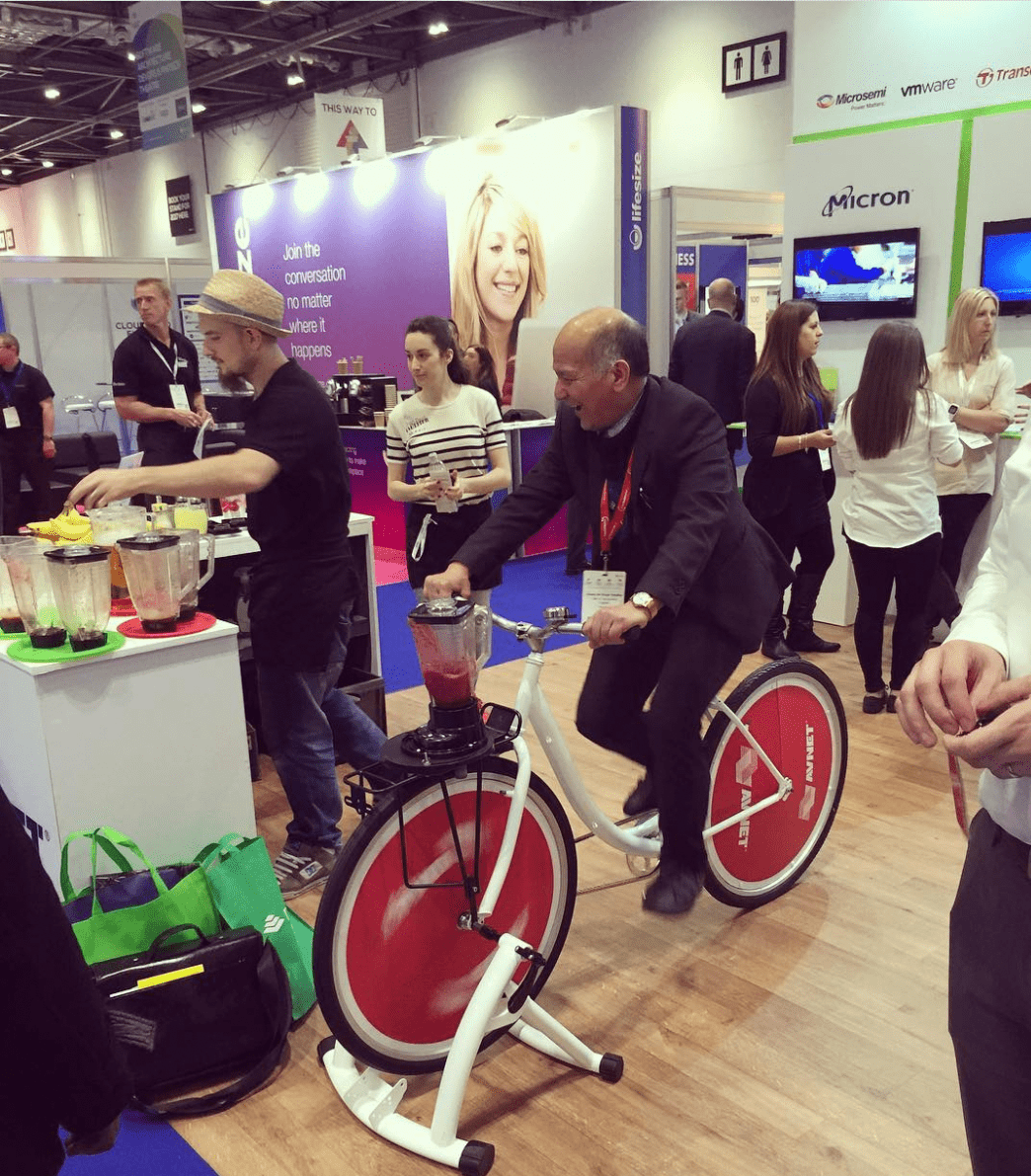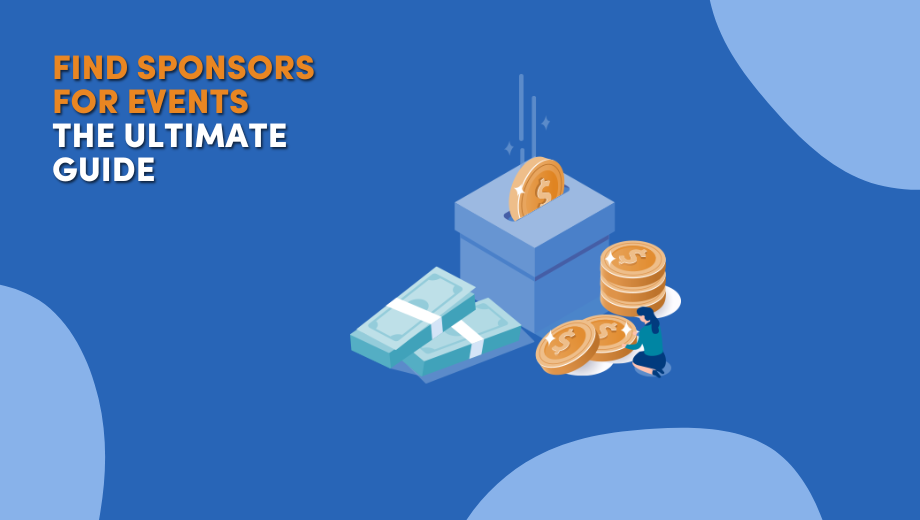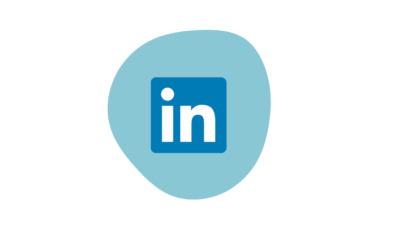Sponsorship is an essential factor in event planning. That is why event planners invest a lot of time in finding sponsors and convincing them of their event. But this is easier said than done, because sponsors want to clearly see the added value of the investment. Our guide gives you an all-round view of the complex and important topic of event sponsorship. In this guide, you will learn how to find suitable sponsors, how to get in touch with them and how sponsorship packages can help you.
Overview:
- Why is event sponsorship important?
- Event Sponsorship: Corporate Goals
- How to find the right sponsors?
- 1. Define your target group
- 2. Create sponsorship packages
- 3. How to identify potential sponsors
- 4. Where to find potential sponsors?
- 5. Create a sponsorship pitch
- 6. Contact potential sponsors
- 7. Conclude sponsorship contracts
- Implement sponsorship activities
- Conclusion
Why is event sponsorship important?
Event sponsorship is one of the most popular forms of sponsorship and an important marketing tool for both the sponsored and the sponsors. Well planned and executed, sponsorship offers a win-win outcome for all parties involved.

On the one hand, as an event organiser you want to find sponsors to generate additional income. Especially event managers who are struggling with budget problems for their events are inevitably dependent on sponsors. In addition to financial support, good sponsors also add value to your event, increase your ticket sales and raise the profile of your event by becoming multipliers on social networks and in news coverage.
On the other hand, companies plan larger sums of their marketing budgets for sponsorship every year and look for suitable events to market themselves to their target group in a way that attracts public attention.
Event Sponsorship: Corporate Goals
In our guide, you will get tips on how to find sponsors and conclude cooperation agreements. But to do this, it is important to understand why companies sponsor events in the first place. Only by knowing what companies want to achieve with sponsorship can you make your event an attractive sponsorship opportunity.
Companies usually sponsor events for the following reasons:
- Increasing the level of awareness
- Increasing reach
- Image building
- Reaching new target groups
- Generating new leads (in B2B or B2C)
- Corporate social responsibility (CSR)
By finding out their reasons, you can show how companies can benefit from your event.
Event-Sponsorship: How to find the right sponsors?
Which sponsors you contact depends on the type of event and your target group. Once you have identified the right sponsors for your event, you need to contact them and convince them. Attractive sponsorship packages can help. At the end of your negotiations, you conclude a sponsorship contract.
That was too fast for you? Then read our step-by-step guide to successfully find sponsors for your event.
1. Define your target group
Most companies opt for sponsorship because the event either receives a lot of media attention or the event visitors are very much in line with the target group. Therefore, as a first step, you should be able to define the target group of your event exactly. Only with this knowledge can you find sponsors who are interested in your event.
If your event is specifically tailored to the interests of a small target group, the likelihood of finding sponsors increases. Why? Because it is interesting for companies to present themselves to a small audience that consists almost of their own target group. There is less wastage and it is much easier to adequately address visitors with the same interests.
Examples of target groups and possible sponsors:
Example 1: TIK (Tag der Industriekommunikation) has its focus on B2B marketing. Consequently, sponsors from the B2B marketing industry or sponsors who can advise or support B2B marketing companies are suitable.
Example 2: The German-French job fair Connexio brings candidates together with companies that offer German-French jobs. Suitable sponsors are therefore German-French institutions, companies and other organisations with a German-French connection.
2. Create sponsorship packages
By developing sponsorship packages, you make life easier for yourself and the sponsors. In these packages you define in advance how and where sponsors can present themselves and what financial contribution they have to make.
There are two approaches to designing event sponsorship packages:
Multi-level sponsorship concept: is the “classic” concept. Different packages are put together at different prices. Sponsors get different levels, for example platinum, gold, silver and bronze.
à la carte sponsorship: with this concept you can serve sponsors individually. This model appeals especially to sponsors who know exactly what they want. Look for flexibility and tailor-made offers here.
Multi-level sponsorship concept
1. Define different levels
The levels are often called Platinum, Gold, Silver and Exhibitor, but as an event planner you can come up with other – quite entertaining – names. The important thing is that the names are comprehensible and still relate to the event..
2. Define the number of sponsors
The following question is crucial for this step: What total amount do you want to generate with the sponsorship? Divide this amount over the different packages. The higher the quality of the components of a stage, the higher you can price them.
You should bear in mind that you should only offer high-priced packages in small quantities, because the better you can argue with exclusivity. An example? If you only offer the main sponsor to present himself at a live lecture, the premium package is all the more interesting for sponsors.
3. Allocate sponsoring services to the levels
Arrange your components by value and match them by quantity to the level of the tiers. This way, sponsors will immediately see which level appeals to them the most. This increases your chances of finding sponsors for your event.
| Sponsor Benefit | Platinum | Gold | Silver | Bronze |
| Sponsor profile (website, social media, logo + description) | x | x | x | x |
| Logo in all newsletters | x | x | x | |
| Logo on cover | x | |||
| Stand-Alone-Mailing | x | |||
| Presentation | x | |||
| In App Surveys (own surveys of the audience) | x | x | ||
| Partner-Pitch | x | x | x | |
| In App messages to all participants | x | x | ||
| Own advertising trailer before the start of the event | x | |||
| Participant tickets | 25 | 15 | 10 | 5 |
| Access to 1:1 video sessions | x | x | x | |
| Sponsored content in the follow-up report | x | |||
| Prices | 50.000 € | 10.000 € | 5.000 € | 2.000 € |
À-la-carte-Sponsoring
With this model, the sponsor can put together his or her own individual package and you need a list of all sponsorship options. For this, a breakdown of the list into “before the event”, “during the event” and “after the event” is a good idea. With this sponsorship package, it is best to negotiate the price individually.
1. Before the event
This stage concerns the visibility of the brand in the run-up to the event as well as the brand presence on the website and/or the event app.
Examples:
- Linking the sponsor’s logo on the event registration page.
- Promotion and linking of the sponsor on your social media profiles of the event.
- Promote the sponsor’s agenda items and speakers in emails.
- Include sponsored giveaways in your promotion of the registration
Would you like to learn how you can better integrate sponsors into your event with an event app? We would be happy to show you the advantages of an event app for sponsorship acquisition in a personal demo.
2. During the event
This stage concerns brand exposure during the event such as brand presence at the event and interaction with the audience.

Examples:
- Spotlighting top sponsors with promotional banners virtually or live on site.
- Creation of a sponsor profile for your sponsor
- Positioning of the sponsor logo in a prominent place on the website and/or event app, including a detailed profile
- Download links to sponsor materials (brochures or product sheets)
- Creation of live polls and rooms with the name of the sponsor
3. After the event
This stage refers to on-demand content in the aftermath of the event as well as presence in the community.
Examples:
- Mention of the sponsor in the first email after the event.
- Use of the sponsor logo in the media library with on-demand videos
- Provision of sponsor content in the media library including links leading to the virtual stand or the website
- Use of sponsor name in post-event feedback survey
3. How to identify potential sponsors
Research potential companies and engage with them. During the research you can address the following points:
Start with companies in your industry niche
To find sponsors, you should first and foremost look in your industry. The advantage is that they address the same target group.
Look for companies that share similar values
If a company’s brand, products and services match the image you embody, sponsorship becomes more likely. Therefore, you need to publicly communicate the values you stand for.
Find out if the company has already sponsored similar events.
Chances are good if a company has already co-sponsored similar events.
Find out which brands your audience loves
The interest of your audience is something you should definitely consider when looking for sponsors. Visitors to your event are excited when they come across brands that love you.
Also ask yourself the following questions:
What ideas could you implement together?
These include, for example, interviews or participation in a panel. Working in partnership provides maximum visibility for the event sponsor.
What valuable consideration can you offer the company?
Sponsorship is not a donation, so you should put together an enticing sponsorship package for your event to inspire sponsors.
4. Where to find potential sponsors?
Finding sponsors has become easier thanks to technology. Use digital tools and common online marketing tactics to make the search easier.
1. Search for similar events
Sie können den Vorgang auch umkehren und nach ähnlichen Events suchen und herausfinden, welche Firmen als Sponsoren auftraten. Die Wahrscheinlichkeit, dass diese Unternehmen ein ähnliches Event sponsoren werden, ist hoch.
2. Platforms for finding sponsors
On these platforms, companies search for suitable events and vice versa. Since it is a kind of “mediation service”, good partnerships can develop. We list some of these platforms below:
- SponsorPitch: You get access to an extensive sponsor database and a CRM system. Detailed analyses and data on organisers and sponsors also facilitate the selection process.
- SponsorMyEvent: SponsorMyEvent is a complete sponsorship management tool designed to help event planners find sponsors.
- Opensponsorship: Opensponsorshio is a special platform for events of athletes, teams and sporting events.
- Sponeasy: a simple and intuitive tool that allows you to create a professional online sponsorship offer and manage your sponsorship in minutes.
3. Run an advertising campaign
Run an advertising campaign to attract event sponsors and participants at the same time. Paid ads on social media, Google or other platforms can help find sponsors.
4. Use social media
Use the reach of social networks to search for event sponsors with a public post. Also share this post in private groups and ask your followers to share your post. For even more reach, you can also promote the post as a social ad. Last but not least, you can contact strategically important people on LinkedIn, for example, and send them direct messages.
5. Create a sponsorship pitch
Create a crisp pitch including an offer to convince the sponsors of your event. In your sponsorship pitch, you should introduce your event and company, list facts and figures and highlight the added value of sponsorship for the company. Pictures from previous events can help to get a better picture of the event and spice up the pitch a bit. The best way to do this is to send a power point presentation generated as a PDF as an attachment in your email.

You should address the following points in your presentation:
- Theme of the event: Is it a niche topic, does it concern a specific business sector or is it a mass event? Describe your event as precisely as possible. Why are the guests coming to your event? Who are the possible speakers or artists performing?
- Target group: Describe your guests in detail. How many people do you expect? Age? Origin? Income? Interests? This information is particularly interesting and valuable for potential sponsors.
- Speakers at the event: Who will lead the conversation at the event and which speakers will appear? Do the speakers appeal more to young people or business people? You can further deepen the analysis of your target group at this point.
- Ticket prices: What prices do you charge? Determining the social status of your participants can help in sponsorship negotiations.
- Location: Where will the event take place? This point is particularly interesting for sponsors in the vicinity, for example caterers.
- Date: When does the event take place. The season also plays a role in the search for sponsors. In summer, an ice cream parlour could act as sponsor, in winter a spirits or tea producer.
- Previous events: If you have already organised an event in the past, include the numbers and pictures of visitors, speakers, artists and sales in the presentation.
- The sponsorship offer: An important part of the presentation is of course the offer as well as the prices. Either include your sponsorship packages with different levels that you have put together in advance or create a tailor-made offer for each company. Explain exclusive sponsorship offers in more detail and make sure to offer enough choice so that there is something for every budget.
Extras: To increase sponsors’ motivation, you can think of extras for sponsors to include at the end of your presentation: free tickets, VIP access and hospitality benefits, sponsors’ dinners, etc.
Important tips for your pitch:
- Since not everyone has a lot of time, be precise and brief in your presentation.
- Include your logo in your presentation and highlight the link to your website and your contact information well.
- Always have at least one person proofread your sponsorship pitch and cover letter.
- Mention how the rest of the process will proceed and how and when you can be reached.
6. Contact potential sponsors
You have identified the right companies as sponsors and created the sponsor pitch, then the next step is to find the right contact persons. Often, the person responsible for sponsorship can be found in the marketing department.
In most cases, you can find the contact on the company website or on LinkedIn. If you can’t find a direct contact, you can also write down some promising names from the company and then pick up the phone.
Once you know the right contact person and their email address, you can send out your cover letter including sponsorship pitch. Make sure you have a good subject line and address the person by name. You can also mention where you got your contact from.
It is important that you put yourself in the sponsor’s shoes and emphasise how they will benefit from the cooperation. Already in the cover letter, mention what you are proposing in return for the financial support.
It is likely that you will not hear back immediately. After about 7 to 10 days, you can briefly ask whether the mail was well received. It is important that you keep at it. Especially if you are organising the event for the first time, companies are more hesitant.
7. Conclude sponsorship contracts
If your sponsor is interested in a partnership, you must draw up a written contract. On the one hand, both parties can present the written contract to the tax office and thus prove their tax treatment of the sponsorship. On the other hand, precisely formulated contracts help to prevent subsequent disputes.
The object of such a contract is the mutual services to which the contracting parties commit themselves. According to Winheller Rechtsanwälte, the following points should definitely be precisely written down in a sponsorship contract:
- Obligations to perform: A clear division of services and consideration is fundamental. The contract should state which specific sponsoring services are to be provided by the organiser (banner advertising, logo on website, etc.) and which cash or non-cash benefits are owed by the sponsor. In addition, information should also be provided on the duration, frequency and number of individual services as well as the due date of the cash and non-cash benefits.
- Liability rules: Liability regulations must be agreed on who will pay for the damage if the event does not take place or is postponed. Additional contractual penalties can be stipulated if one party does not fulfil its obligation to perform on time or properly. Also clarify who will be liable in the event of accidents during events or who will be obliged to take out appropriate insurance.
- Duration of the contract: As there are no legal regulations for sponsorship contracts, the parties themselves must determine how long they wish to be bound by the contract and when they wish to end or extend their cooperation.
They can draw up sponsorship contracts with the help of law firms. They will check the contracts from a legal and tax point of view. You can also find sample templates for sponsorship contracts on the internet at associations, on the websites of lawyers or Wonder.Legal Germany. However, only legal advice can clarify whether these templates are sufficient for your purposes.
Implement sponsorship activities
Whether in-person, virtual or hybrid, sponsors are key to a successful event. So put your partners in the spotlight. But how do you do it? We give you some examples.
How to present sponsors during the event
- Make your sponsor big! : Presenting your sponsor’s content on big screens or huge interactive versions of a product fascinates the audience and makes them curious.
- Connect the sponsor with fun: Make sure your visitors can switch off a little in the midst of all the hustle and bustle. They will thank you for it. Get a smoothie bike and pedal to win the drink. It’s fun, healthy and makes for a great photo op. You can use the space creatively for sponsor branding like the bike and cups.
- Provide Instrammable Content: By providing great photo or video motifs at your event, your visitors will automatically share photos from your event – and your sponsor’s logo right along with them.
- Who doesn’t love free food?: Your visitors will appreciate it if you offer them snacks on the house. You can go one better and highlight your sponsor with their logo. Little things like this can make your event a memorable one.
Want more creative tips? In our article we give you 37 sponsorship ideas for events and coferences.

How to integrate sponsors into the event
- Your sponsor as speaker: Let your main sponsor have their say on stage with a presentation.
- Video clips from your sponsors: Our attention span is often short. Collect short video clips from your sponsors. Put the clips on your event website so that your participants always have access.
- Invite your sponsor in the livestreaming: You can include your sponsor’s logo in the livestream and invite them to talk to the audience.
- Embed sponsors in virtual reality: Branding VR content has proven to be one of the most powerful sponsorship activations.
- Integrate sponsors in the metaverse: You can immerse your audience in an immersive digital world and integrate your sponsor with virtual collectibles (NFTs), branding and exclusive VR events.
You can find even more exciting tips for sponsorship ideas in our related article.
How to thank sponsors after the event
- Sponsor dinner: As a sign of gratitude, you can organise a sponsor dinner after the event.
- Mentioning the sponsor in the first email after the event: You thank your participants for a successful event and highlight your main sponsor.
- Use of the sponsor logo in your B2B Virtual Community: Even after the event, you can continue to keep the event alive in a 365 Day Community, for example with chats, on-demand videos about the event and many other useful contents.
Conclusion
Finding sponsors is part of the daily routine at almost every event. The partnership between sponsor and sponsored is a win-win situation for both parties. After all, in the best case, one benefits from the image, reputation and target group of the other. With our guide to finding sponsors, you will know exactly what to look out for and you can make use of our tips and tricks to find sponsors faster.
The first and most important step is to define your target group, because companies will only warm up to sponsorship if the event target group matches the company target group. Your target group analysis will always be able to support your argumentation for your event and should therefore be watertight.
Sponsorship packages make your offer clearer: “What can I book as a company for what consideration?” If your packages are clearly understandable, companies will be less hesitant to contribute financially. Finally, you build your packages into your sponsorship pitch, which should be clear and convincingly structured. Because once you have sent your sponsorship letter to the right contact person, it has to be convincing.



